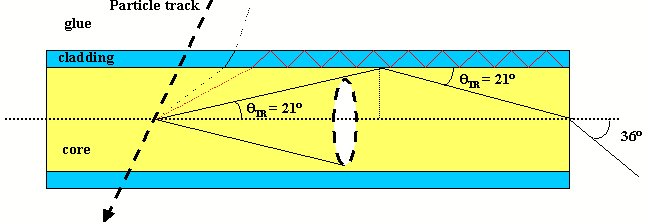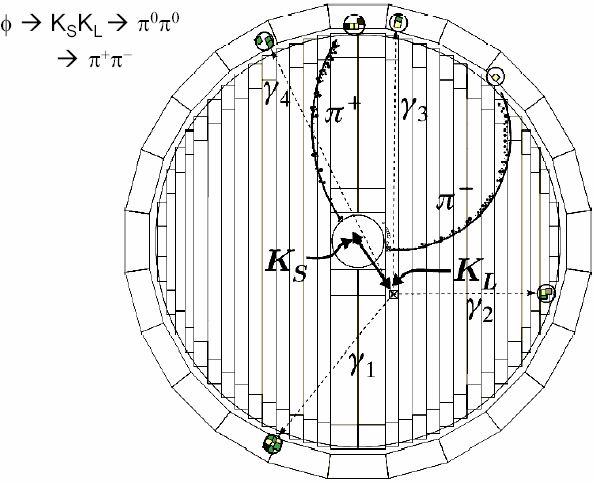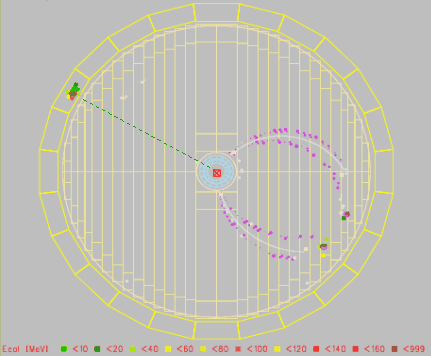
Official site
A conference proceeding
The design has been optimized for the measurement of:
R=R+-/R00=[Γ(KL>π+π-)/Γ(KS>π+π-)]*[Γ(KS>π0π0)/Γ(KL>π0π0)]=1+6*Re(ε'/ε)
In principle one can look for CP violation by counting how many times KS->3π0, but in this case there is a further suppression due to the phase space. So, it's much easier to count how many times KL->2π0.
Drift chamber:
Requirements
Calorimeter:
It's a fine sampling calorimeter (lead/scintillator), in order to have good direction resolution for photons. Its energy resolution is comparable to homogeneous calorimeters.
Requirements

Scintillating fibers:

"K crash": a K Long that does not decay in the drift chamber, but interacts (nuclearly) in the calorimeter:

Equalization of charged/neutral energy scales: by comparing KL>π+π-π0 and K+>π+π0π0.
The KLOE detector is "short" (5 meters long, while it has a diameter of 6 meters): the reason is that the KS+KL pairs from Φ decay have a sin2θ distribution, since they come from a J=1 state.
Peculiarity of KLOE: around the interaction region, the beam pipe is spherical. This is designed to give negligible regeneration effects.